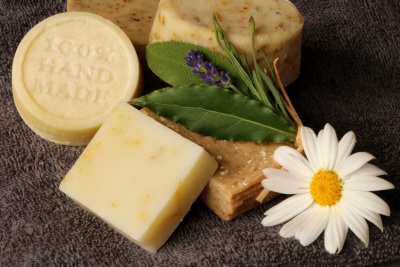The Soap Industry in India is comprised of about 700 companies, which generate a combined annual revenue of approximately $17 billion US dollars. Soaps are distributed to all of India’s major metropolitan cities, and an estimated 50 percent of the soaps that are produced in the country are sold in rural markets. The size of India’s soap market is expected to grow at a moderate rate over the next few years.
The soap industry plays a key role in the economy of India. Though soaps were once products that were only used by the elite, today, the increase of disposable incomes throughout India has lead to an increase demand for soaps. The soap products that are produced in India are not only distributed and used by residents of the country, but they are also distributed and sold to various regions throughout the world.
Factors Fueling the Growth of India’s Soap Industry
There are several factors that have fueled the growth of India’s soap market, and that are expected to continue fueling the growth of this industry in the coming years.
The major factor that has augmented this market is the increase in per capita income. As the income of residents throughout India and the rest of the world rises, so does the demand for soap. As expendable incomes rise, people are more able to afford soap products, particularly specialty soaps that are intended to provide different results.
Another factor that is boosting the size of the soap market in India is the growing awareness of the importance of personal hygiene. Soaps are used to cleanse the skin, thereby removing the buildup of dead skin cells, bacteria and other elements that could have negative effects on personal hygiene, as well as personal health. As more people are becoming aware of the value of good personal hygiene, there is a higher demand for soap products.
An increase in the investments made by key vendors in India’s soap market toward the research and development of higher quality and specialty soaps will also boost the size of industry over the next few years. The development of higher quality and specialty products will lead to an increased interest in these products, and thus, an increased demand for them, which will positively impact the size of this market.
India’s Soap Market: Product Type Segmentation
The soap market in India is segmented according to product type. Soap product types include:
- Soaps for men
- Soaps for women
- Baby soaps
- Specialty soaps (perfumed soaps, for example)
- Medicated soaps
Soaps that are specifically made and marketed for men, women and babies are all expected to enjoy a moderate rate of growth in the coming years. These soaps are designed to offer specific benefits for each group. For instance, soaps for babies are gentler on the skin, which is important for babies’ sensitive skin. Soaps for men are designed to combat hygienic issues that are specifically related to males, and soaps for women are designed to meet the hygienic needs of females. These soaps tend to be the least expensive type, which means that they are affordable for all income classes.
Specialty soaps are soaps that are designed to offer specific qualities, such as fragrances. While these types of soaps are expected to see growth in the coming years, this growth will be minimal in comparison to the above-mentioned soap products.
Medicated soaps are soaps that are designed to combat conditions that afflict the skin, such as dry or oily skin. These types of soaps should also see a moderate growth rate in the coming years. This growth will likely be due to the increased awareness of the benefits that medicated soaps can provide for various skin conditions.
Size of India’s Soap Industry
There are about 700 companies that act as key vendors in India’s soap industry. Together, these companies have a combined yearly revenue of an estimated $17 billion US dollars. The key vendors in this market include Unilever, P&G and Dial, among others. The soap industry in India is highly concentrated. An estimated 50 companies hold approximately 90 percent of the shares of this market.
Effects of India’s Soap Market on the Region’s Economy
India’s soap market has a profound impact on the overall economy of this region. The increased sales of soap products are accounting for greater revenues that boost the economy of the country. Over the span of the next few years, this market is expected to continue contributing to the country’s economy on a whole.
Moreover, the increased demand for soap products has lead to more employment opportunities, which directly affects the economy in a positive manner. More production means more workers are needed in order to fulfill the demands. Greater employment opportunities contributes to the economy by boosting the income of India’s residents, and that income will be put back into the economy via a variety industries.
Employment opportunities in India’s soap market will include:
- Marketing
- Finance
- Distribution
- Administration
It is also expected that there will be more opportunities for models, actors and actresses, as they can be used for marketing efforts.
Projections for India’s Soap Market
The soap market in India is expected to see moderate growth over the span of the next few years. An increase in per capita income, increased awareness amongst the general public regarding the importance of proper hygiene, and greater investments by key players toward the research and development of newer and better products are all elements that will increase the size and boost the value of this industry.
